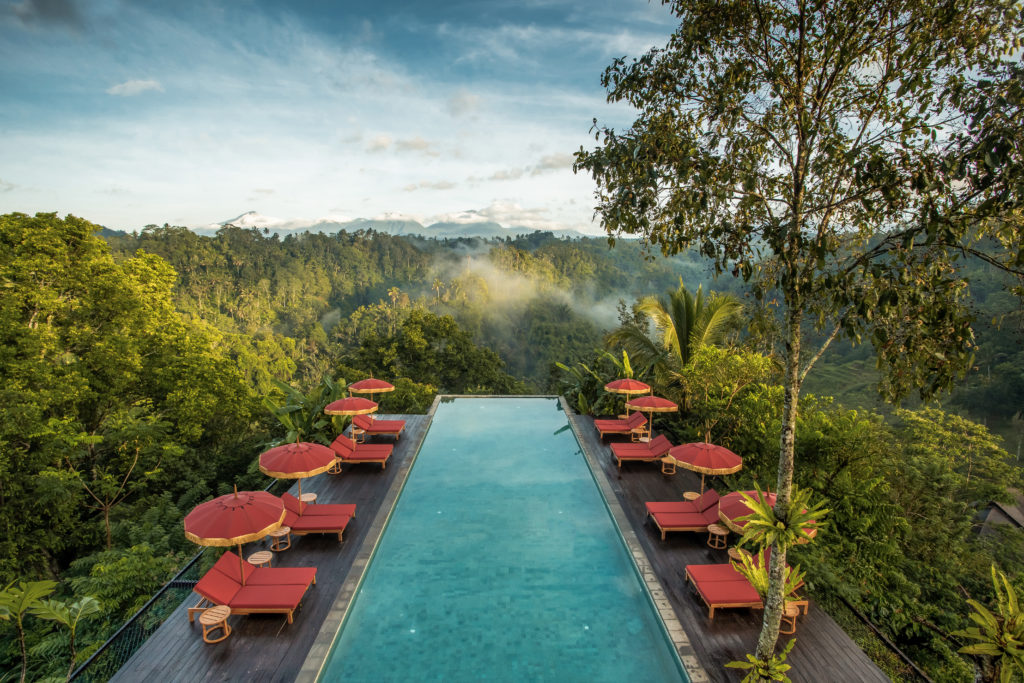By John O’Ceallaigh
It doesn’t happen all the time, or even frequently at all, but there are certain resorts I visit as a luxury-travel journalists that I know I’ll reference constantly in my work as a consultant to luxury-travel brands. But within minutes of my arrival, I knew I’d be telling people constantly about Buahan, A Banyan Tree Escape in Bali. This incredible resort is at the forefront of so many emerging trends that during my stay there it felt like I’d been given a taster of what a really elevated, sophisticated sector of my industry might look like in the future. That’s quite a bold, and potentially pretentious, statement I know, but I think plenty of people will feel the same way if they have the opportunity to experience this new opening for themselves in future.
To put all this into context, let’s start with the backstory. Buahan is in northern Ubud in central Bali, and is still spared the crowds that have inundated other parts of the island now that Indonesia is fully welcoming tourists back. Its owners also own the Banyan Tree brand and purchased the land on which the resort is built about 20 years ago, but couldn’t decide how best to show off such a spectacular setting. Too steep to be useful for farming, the site rolls down a densely forested mountaintop and looks out over rolling hills and verdant valleys. There are a couple of spots in the resort from which you can see a solitary house if you stretch your neck up and to the right, but otherwise guests here will see no other discernable reminder of humanity – that in itself feels so remarkable, not to mention restorative and peaceful.

It really does seem like the owners were sincerely mindful custodians of the land they were lucky to acquire. They rejected 11 architectural proposals for the site before building what guests will find today: a collection of just 16 villas that are embedded across the terrain, alongside a few spa rooms, a yoga pavilion and a common area with a lobby, restaurant and bar, and that beautiful outdoor infinity pool. All of those buildings have a notable feature in common: they’ve been built without walls or doors. At all times during your stay here, you’ll be in the open air, at one with nature.
It’s a beautiful premise that won’t win over everybody in practice. Lodges (referred to at Buahan as ‘bales’) are restrained and beautiful, with plunge pools (unheated, for now) bordering their decks, deep standalone bathtubs made from hand-beaten copper, and cossetting four-poster beds that overlook the forest canopy. But if you don’t like insects you won’t sleep easily. Staff draw thick translucent curtains around the lodges before darkness falls, and mosquito nets are draped around the beds, but still some locals might infiltrate those barriers. During my three-night stay we encountered a fist-sized cricket and bowl-width moth. At three different times we found cute little frogs staring up at us from the toilet. Plenty of resorts promise ‘back to nature’ experiences; at Buahan you’re really within it. (And without walls and windows the jungle can get loud too – bring ear plugs if you’re a light sleeper. But don’t worry about the lack of air-con – it can get surprisingly cool at night at Buahan, where the lodges are set at heights of between 600 and 700 metres above sea level; there’s an unusual but discreet, quiet and effective high-tech curved cover over the bed that circulates cool air over sleepers if it should become unusually balmy.)
I’m sure some people arrive here with high expectations only to discover they can’t stick it, but I loved it. (I’m reminded of a Greek couple I heard about who went to Fregate Island Private in the Seychelles, famously home to more than one million genuinely ginormous, slithering Seychelles giant millipedes and got right back on their helicopter when they discovered that reality – strange they hadn’t been alerted to that unavoidable aspect of the experience by their travel advisor before their arrival.)

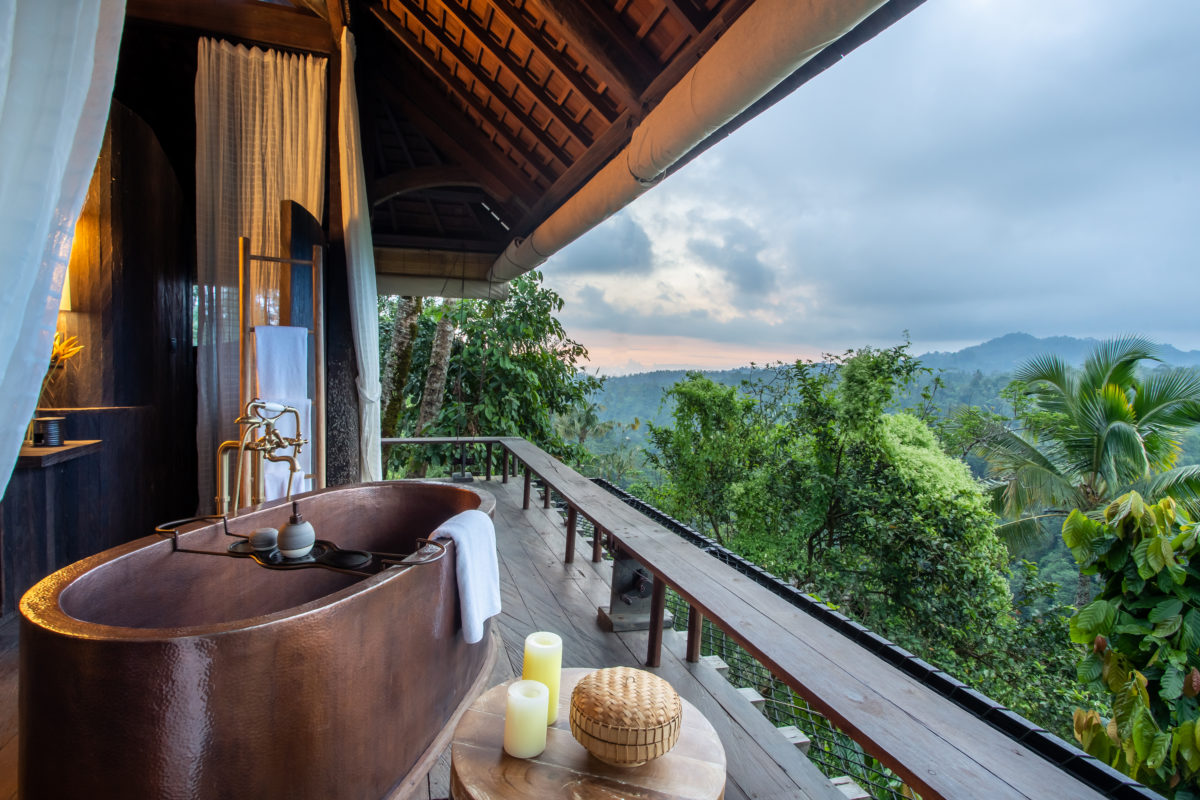
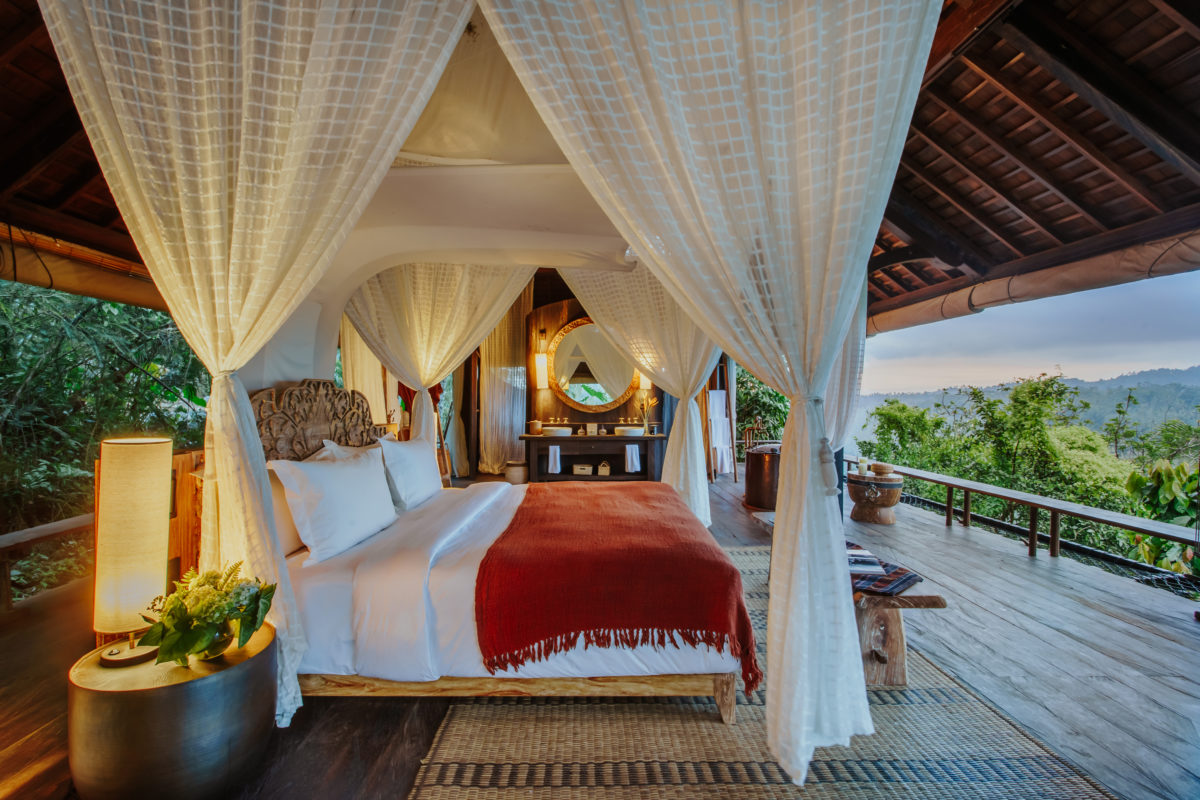
That sense of cohabitation with the surrounding environment seems also to have influenced Buahan’s sincere respect for it. Locally born head chef Eka Sunarya worked in upmarket properties all over before returning home and his time away has left him with a profound appreciation of what was always on his doorstep. His menus showcase traditional Balinese and Indonesian dishes, often less known even to locals nowadays, frequently using ingredients that will be unknown to even the most expert epicureans. Menus change frequently and I had to question the polite, patient staff constantly about what was what. More simple dishes might include slow-braised jackfruit with coconut milk, gulai spice and crispy shallot; we also enjoyed the most tender slow-cooked spiced duck, alongside excellent juices and cocktails (the Baligroni features arak, rosella tea, homemade tangerine liquor, star anise and cardamom), and languid breakfasts by the pool, where we would pick up some black-rice banana bread and fruit from the buffet as we waited for a la carte dishes such as blistered plantain with honey cashew and coconut yoghurt. (And we did wait – one of my few criticisms of Buahan is that wait times at meals can be extensive, but we felt that was more due to insufficient number of staff being placed on shifts than any shortcomings on the floor staff’s part.)
Buahan’s respect for its surroundings is also reflected in how it engages with its community. On his return home, chef Eka committed to educating his neighbours about the value of the produce they were growing – unknowingly, they were unfairly paid by some of their wholesale customers – and in good, sustainable farming practices. He led us on a tour of the farms that supply Buahan’s products – the best such tour I’ve ever undertaken – and we saw fields flourishing with the most amazing diversity of produce, from the expected leafy greens to the most beautifully perfumed vanilla pods to ingredients I’d never heard of, like tamarillo and sunberries. Afterwards we gathered around a table by a field to sample more of the produce, with Eka visibly relishing the opportunity to showcase the all-organic bounty. (“You’ve got to try this, and this” he’d say, as he offered up fresh honey and gently barbecued mountain mushrooms.)
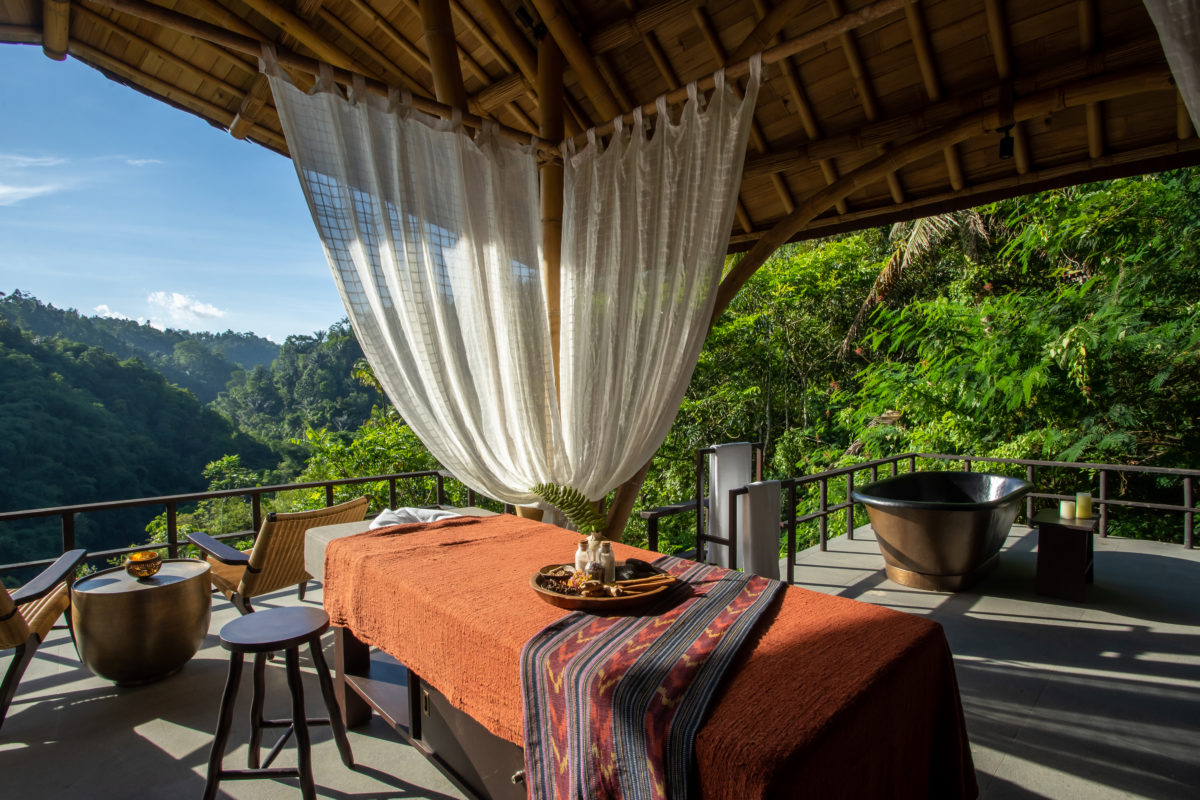

On another day we joined one of Buahan’s external partners, Wayan of the eco lodge and tour company Tegal Dukuh Camp, for a half-day tour of the locality that brought us to immensely beautiful and completely deserted temples and peaceful local villages. We learned more about our surroundings, including that the fireflies we had seen flickering at Buahan only survive in the most pristine environments. Locals believe that they are the spirits of their ancestors, providing reassurance and guidance.
The story was moving to me because being at Buahan (and Bali) had opened up my imagination quite noticeably. When you’re there it’s a little bit easier to believe that magic might be a possibility. One morning we walked down the many, many steps that led to a waterfall on the valley floor and allowed ourselves to be happily pummelled by the flow. Later during a massage and healing session in one of the treatment rooms I listened again to the water’s rumble as I drifted in and out of consciousness. It was almost transcendental, I could have imagined I was somewhere primordial.
My three days and three nights there passed slowly but quickly – strange how that sometimes happens. Our days went by lazily and peacefully, it felt very restful – I could happily have stayed a week, which was surprising as I had thought prior to check in that it might be a not particularly comfortable one-night-only novelty (as with any of the Ice Hotels you might find in Scandinavia).
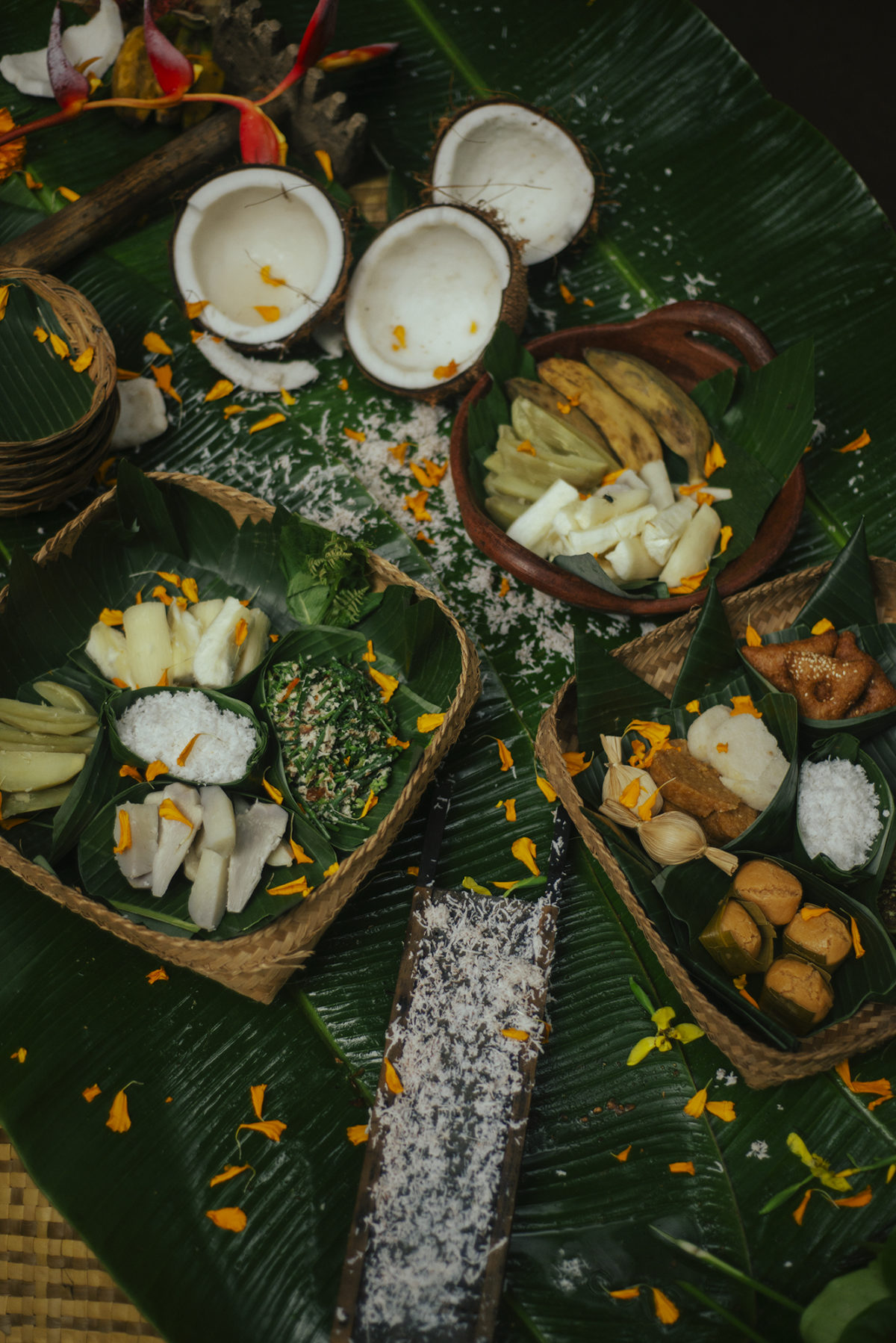
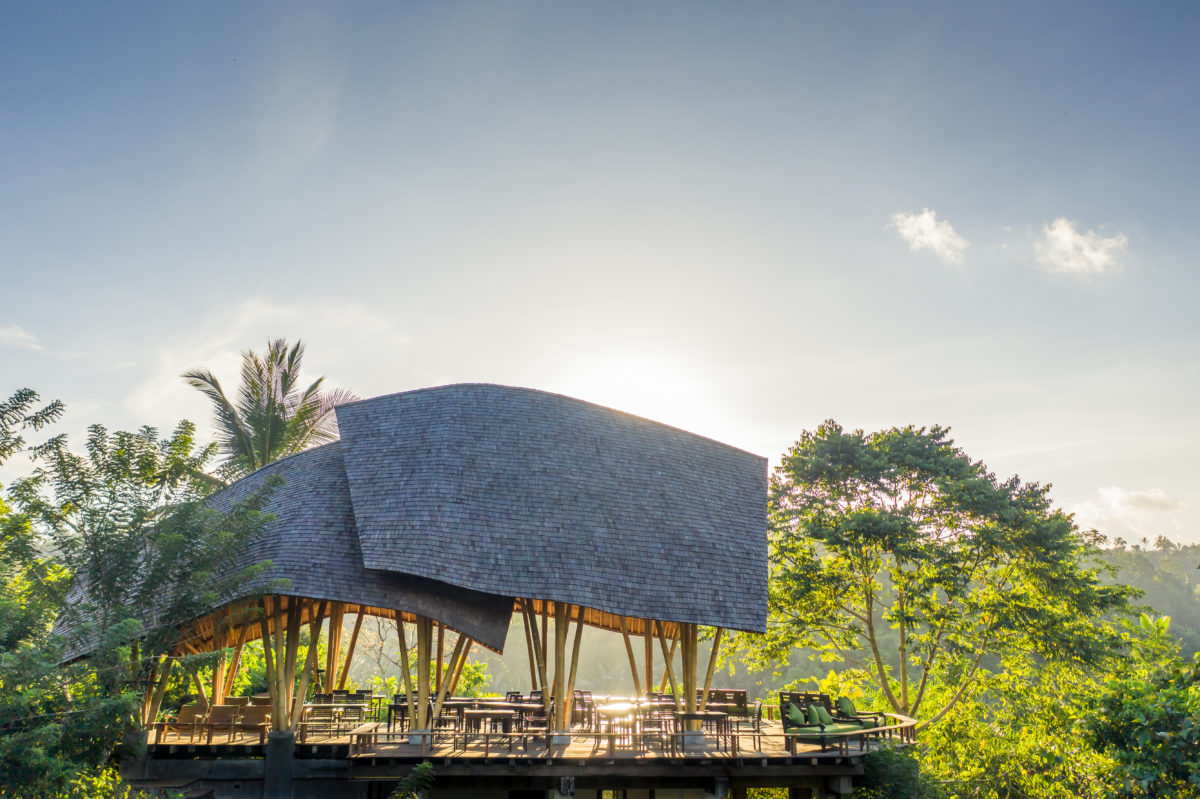


I left feeling rejuvenated by the setting, and the experience of being so immersed in my surroundings. It’s not really a place you can experience passively, and it’s interesting to consider how a concept so ambitious could also elevate the Banyan Tree brand more generally. I’d had mixed experiences in some of their other properties and had largely forgotten about the portfolio in recent years. It feels like there’s an acknowledgement that other Banyan Trees don’t match the ambition or levels of luxury you’ll find at Buahan, A Banyan Tree Escape – the ‘Escape’ designation was created here to signify that this Banyan Tree is different from what preceded it, and the demarcation will be used by a new range of similarly remote and sustainability minded resorts of which Buahan will be a global flagship. If the properties to come are anything like the original, they’re certain to be very special.
Room rates at Buahan – A Banyan Tree Escape, Bali cost from $1,116 per night half-board, inclusive of taxes and service charge.
If you’re looking to book a hotel stay, LUTE can provide additional privileges and benefits at luxury hotels around the world, at the best-available room rate. For more information, email rooms@lute.co.
LUTE is a luxury-travel consultant and content agency that works with hotel groups, tour operators, tourist boards, airlines and more. You can learn more about LUTE here. For frequent luxury-travel updates, follow LUTE and LUTE founder John O’Ceallaigh on Instagram.
